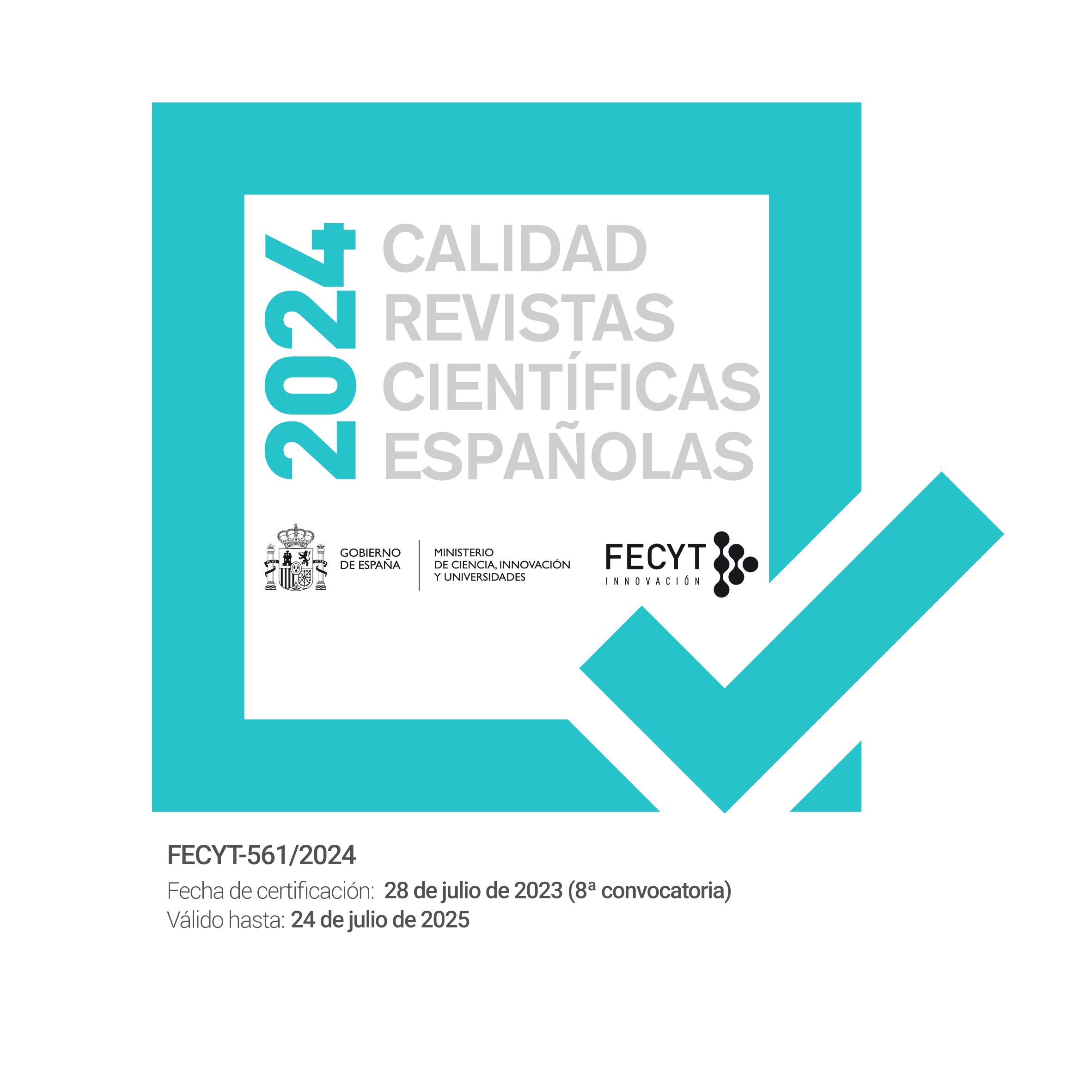Novos discursos na publicidade de cerveja na Espanha: estudo semiótico
DOI:
https://doi.org/10.12795/Ambitos.2022.i55.09Palabras clave:
campanha publicitária, semiótica discursiva, cerveja, discurso publicitário, tendênciaResumen
O artigo propõe um estudo da publicidade audiovisual da cerveja espanhola La Brava, lançada em dezembro de 2015. A importância desse anúncio se deve ao fato de ele romper com as estruturas publicitárias costumeiras para as publicidades de cerveja na Espanha. Temos, nesta pesquisa, o objetivo de: (i) explicitar os aspectos culturais encontrados e transpostos para a publicidade, a qual revelam a visão de mundo e os valores históricos e sociais do país a partir do estudo do plano do conteúdo, níveis narrativo, discursivo e fundamental; e (ii) analisar as categorias cromáticas, eidéticas e topológicas para verificar como o anúncio cria um efeito de sentido. Como arcabouço teórico nos apoiamos na semiótica discursiva, principalmente nas pesquisas de Greimas e Courtés (2008), Floch (1985, 1995ª, 1995b),
Oliveira (2004) e Oliveira & Teixeira (2009) para compreendermos os efeitos de sentido construídos e produzidos no texto- enunciado e (re)passados ao leitor- enunciatário-destinatário. A metodologia utilizada neste artigo é a descritiva, e o método empregado é o hipotético-dedutivo. Os resultados pretendem demonstrar que os elementos verbais, sonoros e visuais tornam a propaganda significativa para o seu leitor/receptor (enunciatário/ destinatário), que é influenciando a comprar e a consumir a cerveja.
Descargas
Citas
Barros, D. L. P. (2002). Teoria do discurso: fundamentos semióticos (3a ed.). Humanitas, 2002.
Beividas, W. (2006). Semióticas sincréticas (o cinema). Posições. https://bit.ly/3sdTkDg
Bertrand, D. (2003). Caminhos da semiótica literária. Tradução Grupo Casa, coordenado por Ivã Carlos Lopes. EDUSC.
Caro, A. (2009). Una fase decisiva en la evolución de la publicidad: la transición del producto a la marca. Pensar la Publicidad, 3(2), 109-132.
Coelho, P. M. F. (2014). Análise da performance do jogador no game World of Warcraft: um mundo de papéis. Illuminazioni - Rivista di Lingua, Letteratura e Comunicazione, 27,160-196.
Dichter, E. (1963). La estrategia del deseo. Huemul.
Fanjul, C. y González, C. (2012). El rol de los códigos verbales de la realidad en la creatividad del discurso publicitario. Doxa Comunicación, 14, 75-97. https://cutt.ly/5tZCVwA
Floch, J. (1985). Petites mythologie de l’oeil et de l’esprit. Hadès-Benjamins.
Floch, J. (1995a). Semiotique, marketing et communication (2ème ed.). PUF.
Floch, J. (1995b). Identités visuelles. PUF.
García, J., & Cabezuelo, F. (2016). El enfoque semiótico como método de análisis formal de la comunicación persuasiva y publicitaria. Diología, 10, 71-103.
Gardner, B. y Levy, S. (1955). The Product and the Brand. Harvard Business Review, 33(2), 33–39.
Gil, A. (2002). Como elaborar projetos de pesquisa (4ª ed.). Atlas.
Gomes, R. S. (2009). O sincretismo no jornal. In R. S. Gomes. Linguagens na comunicação: desenvolvimentos de semiótica sincrética. Estação das Letras e Cores.
Greimas, A. J., & Courtés, J. (2008). Dicionário de Semiótica. Editora Conceito.
James, W. (1890). The principles of psychology. Henry Holt.
Jiménez-Marín, G.; Elías Zambrano, R.; Galiano-Coronil, A.; Tobar-Pesántez, L. (2021). Brand management from social marketing and happiness management binomial of in the age of Industry 4.0 Journal of Legal, Ethical and Regulatory Issues, 24(1), 1-10.
Martineau, P. (1957). La motivación en publicidad. Mc-GrawHill.
Mick, D. (1986). Consumer Research and Semiotics: Exploring the Morphology of Signs, Symbols, and Significance. The Journal of Consumer Research, 13(2), 196-213.
Murray, J. (2001). Hamlet no Holodeck – O futuro da narrativa no ciberespaço. Ed. Unesp.
Oliveira, A. C. de. (2004). Semiótica Plástica. Hackers Editores.
Oliveira, A. C. de., & Teixeira, L. (orgs). (2009). Linguagens na comunicação: desenvolvimentos da semiótica sincrética. Estação das Letras e Cores.
Péninou, G. (1976). Semiótica de la Publicidad. Gustavo Gili.
Sanz-Marcos, P. y Sánchez-Gey Valenzuela, N. (2020). Investigar el poder simbólico de las marcas a través de sus espacios publicitarios audiovisuales. Un análisis semiótico según el modelo metodológico de Andrea Semprini. Comunicación y Métodos, 2 (1), 7-22.
Soler, P. (1991). La investigación motivacional en marketing y publicidad. Deusto.
Tenuta, A. R. A. (2005). Um olhar semiótico sobre as várias maneiras de desenhar um cubo. (on-line). Estudos Semióticos, 1. DOI.org/10.11606/issn.1980-4016.esse.2005.49155.
Descargas
Publicado
Cómo citar
Número
Sección
Licencia
Derechos de autor 2022 Patricia Farias Coelho, Ph.D. Irene García-Medina, Ph.D. Alizira Lobo de Arruda Campos

Esta obra está bajo una licencia internacional Creative Commons Atribución-NoComercial-CompartirIgual 4.0.
Ámbitos. Revista Internacional de Comunicación es una revista de acceso abierto, lo que significa que todo su contenido está disponible gratuitamente para el usuario o su institución. Los usuarios pueden leer, descargar, copiar, distribuir, imprimir, buscar o enlazar con el texto completo de los artículos, o utilizarlos para cualquier otro fin lícito, sin solicitar permiso previo al editor o al autor. Esta definición de acceso abierto se ajusta a la Iniciativa de Acceso Abierto de Budapest (BOAI).

A menos que se indique lo contrario, todo el contenido de la edición electrónica se distribuye bajo una " licencia internacional Creative Commons Attribution-NonCommercial-ShareAlike 4.0 ". Puede consultar la versión informativa y el texto legal de la licencia aquí. Esto debe indicarse expresamente de esta manera cuando sea necesario.
En caso de aceptación del manuscrito, los autores ceden los derechos de la obra para su publicación a Ámbitos. Revista Internacional de Comunicación bajo el contrato de licencia Reconocimiento-NoComercial-CompartirIgual 4.0 Internacional (CC BY-NC-SA 4.0). Los autores conservan los derechos de autor y terceros están autorizados a copiar, distribuir y hacer uso de la obra, siempre que cumplan con los términos y condiciones establecidos en la licencia.
- Citar la autoría y la fuente original de publicación (revista, editorial y URL de la obra).
- No los utilice con fines comerciales.
- Si remezcla, transforma o crea a partir del material, debe publicar sus contribuciones bajo la misma licencia que el original.
Se puede encontrar más información en https://creativecommons.org/licenses/by-nc-sa/4.0/deed.es



















